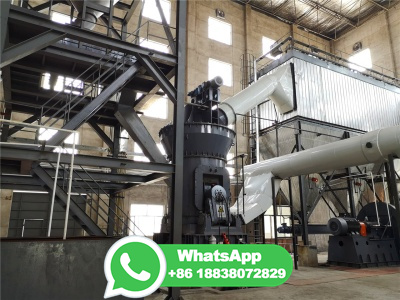Aluminium smelting Wikipedia
Aluminium smelting is the process of extracting aluminium from its oxide, alumina, generally by the HallHéroult process. Alumina is extracted from the ore bauxite by means of the Bayer process at an alumina refinery .

Aluminium smelting is the process of extracting aluminium from its oxide, alumina, generally by the HallHéroult process. Alumina is extracted from the ore bauxite by means of the Bayer process at an alumina refinery .

A large amount of alumina has to be produced in order to produce aluminum in the HallHéroult process; it requires about 4 t of bauxite to produce 2 t of alumina and it takes almost 2 t of alumina to produce 1 t of aluminum metal. The two largest operating costs per ton of alumina in Bayer plants are bauxite and fuel. Bayer Process

HallHeroult process The HallHeroult process is the major industrial process for the production of aluminum.. In the HallHeroult process alumina, Al 2 O 3 is dissolved in a carbonlined bath of molten cryolite, Na 3 AlF fluoride, AlF 3 is also present to reduce the melting point of the cryolite. The mixture is electrolyzed, and liquid aluminum is produced at the cathode.

In this process, heated bauxite is mixed with caustic soda. This process separates the aluminum from the other minerals in bauxite. The caustic soda then dissolves the iron and silica. Afterward, the iron and silica are removed as waste. After the Bayer Process, a second method, called the HallHeroult process, purifies the aluminum.

Red mud near Stade Bauxite, an aluminium ore (Hérault department, France).The reddish colour is due to iron oxides that make up the main part of the red mud.. Red mud, now more frequently termed bauxite residue, is an industrial waste generated during the processing of bauxite into alumina using the Bayer is composed of various oxide compounds, including the iron oxides which give ...

The smelting process used universally around the world for the production of aluminum is known as the HallHeroult process. This process was independently discovered and patented in1886 in the United States by Charles Martin Hall and in France by Paul Heroult. ... In this process, the high silica bauxite is ground with spent sodium aluminate ...

Charles Martin Hall, an American chemist, and Paul L. T. Héroult, a French chemist, each invented this process independently in 1886. The second was the invention of a new process that could cheaply obtain aluminum oxide from bauxite. Bauxite is an ore that contains a large amount of aluminum hydroxide (Al 2 O 3 ·3H 2 O), along with other ...

Production of Aluminum: The HallHéroult Process National Historic Chemical Landmark Dedicated September 17, 1997, at Oberlin College in Oberlin, Ohio, and November 2, 2001, at Alcoa Inc., in Pittsburgh, Pennsylvania. Commemorative Booklet: Production of Aluminum Metal by Electrochemistry (PDF)

includes some subsidiary procedures such as bauxite mining and anode production. ... Process type. Table 5: List of main ... May be recycled back to the HeroultHall process. 10 03 08*

Aluminium recycling is the process in which secondary aluminium is created from scrap or other forms of endoflife or otherwise unusable aluminium. [1] It involves remelting the metal, which is cheaper and more energyefficient than the production of aluminum from raw bauxite via electrolysis of aluminum oxide (Al 2 O 3) during the Hall ...

Figure 1 shows a schematic graph of the HallHeroult cell that is used currently in primary aluminum production. The cell consists of the bath (molten cryolite, Na 3 AlF 6 ) in which the alumina ...

Bauxite via the Bayer process. This process will be briefly introduced in the following, as well as the reduction to aluminium, the anodes production and further steps of primary production. Alumina Production (Bayer Process) The aluminium production starts with the production of alumina from bauxite according to the socalled Bayer process.

The focus of this video is really the HallHéroult process. The conversion of alumina to aluminum metal is performed using electrolysis. Electrolysis is a chemical process where electricity is passed through an electrolyte, causing it to decompose into its constituent elements. A lot of power is required to drive the electrolysis process ...

The HallHéroult process is the major industrial process for smelting aluminium. It involves dissolving aluminium oxide in molten cryolite, and electrolyzing the molten salt bath, typically in a purposebuilt cell. The HallHéroult process applied at industrial scale happens at 940980 °C and produces % pure aluminium. Recycled aluminum requires no electrolysis, thus it ...

Aluminum ore, also known as bauxite, is a naturally occurring mineral rock that contains aluminum in the form of aluminum oxide (Al2O3) mixed with various impurities. Bauxite is the primary source of aluminum, which is one of the most abundant elements in the Earth's crust, comprising about 8% by weight. Bauxite.

Bauxite Ore Processing. Aluminum is found in varying amounts in nature as aluminosilicates (contains aluminum, silicon, and oxygen) in various types of clay. As the minerals are weathered they gradually breakdown into various forms of hydrated aluminum oxide, Al 2 O 2 O, known as bauxite. The bauxite is purified by the Bayer Process. First ...

The Bayer process is used for refining bauxite to smelting grade alumina (Al 2 O 3), the precursor to aluminium. The process was developed and patented by Karl Josef Bayer 110 years ago, and has ...

Bauxite is a sedimentary rock mineral that is the primary source of aluminum. It is formed through the weathering of aluminumrich rocks in tropical and subtropical regions. The name bauxite is derived from the French village of Les Baux, where it was first discovered in 1821 by geologist Pierre Berthier. Bauxite is typically found in layers beneath a few meters of overburden, which can vary ...

How is aluminium extracted from its ore (bauxite)? What is the HallHeroult Process?Watch to find out!Catering for IGCSE and SPM students. Don't forget to li...

At present, aluminum is mainly produced via two different methods: (I) a primary aluminum production from bauxite ore via the Bayer process for alumina extraction, followed by HallHeroult ...

Aluminum is mainly produced by two different methods: (I) a primary aluminum production from bauxite ore by the Bayer process for alumina extraction followed by HallHeroult electrolysis for Al ...

According to the worldwide average, tons of bauxite is necessary to produce 1 ton of alumina. Primary aluminum is produced via the HallHéroult process, a process of electrolytic reduction in a molten bath of natural and synthetic cryolite. Two tons of alumina is necessary to produce 1 ton of primary aluminum.

Alumina Extraction Problem. In the standard Bayer Process for refining bauxite to produce alumina, the dissolution of the alumina in the ore to form sodium aluminate is accomplished in autoclaves under high pressures varying from 70 to 200 pounds per square inch. However, some lateritic bauxite ores are readily soluble in caustic, making it ...

The extraction of aluminum metal from the aluminum hydroxide in bauxite ore by the HallHéroult process is one of the most remarkable success stories of late 19th century practical chemistry, turning aluminum from a rare and precious metal into the cheap commodity it is today. In the first step, aluminum hydroxide reacts to form alumina and water:

Simply melting it isn't feasible, since it has an outrageously high melting point (2,072° C). The key to the HallHéroult process was the discovery of cryolite, a salt of sodium, aluminum, and ...

The HallHéroult process is a major industrial process that involves the smelting of aluminium. It involves dissolving aluminium oxide (alumina) obtained from bauxite through Baeyer's process. In this process, pure alumina is mixed with Calcium fluoride (CaF2) or Cryolite (Na3AlF6).

Corundum Al 2 O 3 Cryolite Na 3 AlF 6 Metallurgy of Aluminium Aluminium is mostly extracted from its bauxite ore. Dressing of Ore The ore is mechanically crushed and pulverized. Concentration of ore The bauxite ore contains ferric oxide and silica as impurities.